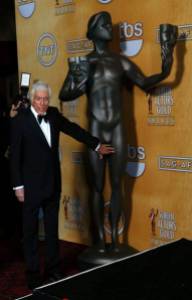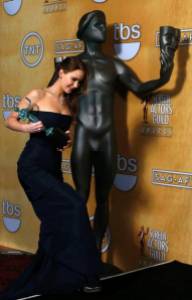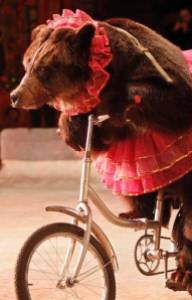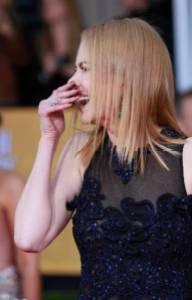Dear Readers,
In fame, the body is often seen as an object and plays a role in shifting attention from our free creative spirit. Reading the body as a text is a common practice in celebrity culture and in everyday life. The body often plays a significant role in voyeurism and spectator gratification. This thought occurred to me when I reviewed Dr Daniel Ploeger’s latest lecture and performance titled ‘Thinking Critical / Looking Sexy.’
Daniel Ploeger is an academic and artist based in London and Berlin. On February 8, 2013, he presented his unclothed body to explore how nudity is often perceived as a sexual act. I admire Ploeger’s performance because he challenges dominant ways of presenting in academia where formal attire is the norm. In fact, he has inspired me to consider creative artistic presentations in my own lectures and talks, specifically dance. For me, dance is an embodied act that engages with all senses i.e., kinaesthetic, somatic, aural as well as spatial. My dance movements will involve choreographed steps of touching, feeling, and extending the body (the skin and its performative extension, clothes) that can subvert cultural repression of sensuality. Such a performance can empower the flow of a free creative spirit and celebrate talent, which is the essence of my research and lectures on fame. In his performance, Ploeger takes a different step and strips off his clothes. He reflects on cultural theorist Rob Cover and points out how the “unstable character of relational contexts […] results in all nudity potentially signifying sexuality.” This signification is normalized, naturalized, and legitimized. Even though some performance artists appear to reject the normative body through transgressive acts, Ploeger contends that the fascination and anxiety around sex continue to emerge as normal expressions. The objectification of the nude body can be understood in relation to the Screen Actors Guild Awards that took place just before Ploeger’s performance. At the SAG awards, there were two major kinds of objectification of the body: sexualization and animalization.
The sexualization of the body was observed in the construction and representation of the award. The award resembles a nude man taking off his masks. While the removal of the mask may act as a form of revelation of self, media representation of the award emphasized fragmented parts of the man. For example, the arts section of Canada’s national newspaper The Globe and Mail captured actor and producer Dick Van Dyke and stated “The lively Dick Van Dyke checks for hernias at the Screen Actors Guild Awards in Los Angeles on Sunday.” Here, the specific reference to “hernia” shifts attention from the whole body towards the penis only. The caption of the next photograph stated “Jennifer Lawrence heads backstage at the Screen Actors Guild Awards and oh my god I just realized the man in the previous photo is named Dick.” In both cases, the phallic nature of the man is selectively emphasized and objectified in celebrating talent.
When a body does not resemble a normalized human figure, it is called an animal. Drawing on scholars Luke Sharp and Azuma Hiroki, animalization is the cultural process of humans rejecting their intersubjective desires and imagining their selves in relation to an ‘Other.’ This imagination figures in dominant practices of celebrity culture as well. I was shocked and disturbed to observe a bear put in a pink skirt and trained to ride a bicycle in The Globe and Mail photo gallery. Readers may ask, was the bear really at the SAG awards? Why is the bear portrayed in The Globe and Mail gallery? The rationale for including the bear’s photograph in The Globe and Mail is not clear or proven.
There is also a photograph of an Iranian monkey that was sent in a space shuttle. Here the monkey is forcefully trapped and looks sad with terror. In The Globe and Mail photo gallery, the image of the monkey is followed by a photograph of actress Nicole Kidman. According to The Globe and Mail, “Space monkeys make Nicole Kidman snort.” Here Kidman is represented as being gratified by the trapped non-human animal. However, it must be noted that there is no direct relationship between the space shuttle and film awards. What if Nicole Kidman cares about non-human animals and the moment of her amusement is not related to the space shuttle that was sent? Here the image of the monkey, like that of the bear, is placed out of context.
The question that comes up, again, why did The Globe and Mail abruptly insert the photo of the non-human animal in the celebrity photo gallery? Doesn’t this media practice appear as an act of mockery that defames the celebrity, on one hand, and contributes to degrading non-human animals, on the other side? Or does The Globe and Mail intend to be critical of cruel practices by creating a shock value and pointing out an irony with luxury in celebrity culture? As a Globe and Mail reader Sandra I. comments on the photograph, “I thought this was satirical and supposed to juxtapose cruel horrors of our society against the obsession and consumerism of celebrity culture that distract everyone from our demockery, I mean democracy… Animal cruelty is no laughing matter — circus bears are horribly tortured into submission and stolen from their homes in the wild, just as monkeys are who are used for scientific experimentation. If you care at all about animal abuse and exploitation please go to care 2.”
Marginalized representations of human and non-human animal bodies shift attention from our innate talent of creation. After viewing the film Earthlings, I became aware of horrifying and forceful practices that are involved in relations with non-human animals. These brutal practices are present in factory farms, circus trainings, and lab experiments on a regular basis. Although cruelty to animals in the circus industry is on the decline, it reappears in media representations of events such as the Screen Actors Guild Awards. These practices exist because non-human animals have a look that is different from human bodies and high profit is made out of objectifying and commodifying these looks.
As I offer critical reflections on the body as an object, I ask myself: Can we embrace the body, human and non-human, in a way that embraces undivided presence? In celebrating talent, does sexualization and animalization of the body play any significant role? Do we really need ‘Othering’ and identifying a presence on the basis of an absence or fragments of self? These fragmented parts of self, as represented in sexualization and animality, can be released so the creative body and heart can be celebrated as a ‘whole.’
Thank you for stopping by and being a part of this post.
My love and gratitude goes to Dr. Louis Massey and Dr. Anita Krajnc for sharing supportive thoughts during the writing of this blog.
For more information on Daniel Ploeger’s academic and artistic presentation on the body, visit http://www.daniploeger.org/#!thinking-critical–looking-sexy/c3i4 and http://dance-tech.tv/videos/daniel-ploeger-thinking-criticallooking-sexy/
With affection,
Samita Nandy
—

















Recent Comments